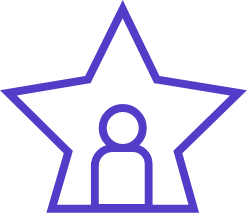
Employees are assets, and they are called so for a reason! Better the talent aligns with your business strategies, better outcomes are assured. Hence, recruiting people who exactly match your requirements is a must for productive and efficient teams.
It is easier said than done because finding the talent you require is like finding a needle in a haystack. Here is where Talent Mapping can come to organizations’ & recruiters’ rescue.
Let us understand what Talent Mapping is
Usually, in organizations recruiting or hiring is a reactive approach. Recruiters search for candidates when there is a position to be filled. Most of the time, hiring comes across as urgency and not a part of a planned activity. In such a scenario, you look forward to the first best candidate that applies or comes across. There are high chances of missing the better fit candidate in haste.
Talent mapping is one of the ways to avoid this hustle.
“Talent Mapping is a proactive approach used to anticipate long-term hiring requirements and then encourage organizational support for new roles over time. Essentially, talent mapping bridges the gap between a company’s strategy and the workforce they must hire to achieve them.”
Talent mapping needs a business strategy to hire the candidates so that recruiters can go in-depth to find suitable candidates. It is more like searching for niche target candidates.
Such as searching for a Systems Engineer with J1797 protocol experience. J1797 Protocol is a communication Protocol, something an engineer would not specifically mention in their resumes. In such cases, recruiters need to know synonymous terms to hunt down a specific candidate. In this scenario, alternatives search terms are SAE protocols, CAN Bus, CANoe, CANalyzer, CANcase. Mostly, automotive companies have these protocols. Hence, any candidate working as a Systems Engineer in the Automotive companies should have this experience.
Hence, when recruiters and sourcers want to reach highly qualified talent from niches, talent mapping is a significant part of sourcing that needs dedicated resources.
Benefits of Talent Mapping
Reach high-performers – The thorough research of candidates helps you identify high-potential talent best for business and nurture them accordingly to your strategy.
Faster hiring – It is not a hit-and-miss strategy where recruiters contact 100s of candidates and try to hire one of them!
Understand market trends – The current hiring and job seeker trends such as where candidate locations, mobility trends, and prominent employers are easier to track with in-depth research during profile hunts, recruiters come to know the
Supports diversity sourcing – Talent mapping is the best way to source diversely, as it gives ample time to search for candidates from multiple groups by collecting valuable insight into gender, age, and ethnicity demographics.
Scaling up becomes easier – Talent mapping helps organizations that are at the growth stage. It enables to recognize the talent needs and hire strategically for an organization.
How to Initiate Talent Mapping
While Talent Mapping is not new to recruiters, it is not widely adopted by organizations yet. It might be a little hazy at the initial stage. Here are a few guidelines you can opt to start with your talent mapping strategy.
1. Identify Requirement
When starting to map talent, think of the duration you want to define your strategy. Suppose you start with a short-term plan of 1 year, then determine the number of positions to acquire within this time across the organization.
2. Define Job Descriptions
Define accurate job descriptions for every new role to be filled in and refresh the job roles of existing employees to match your business requirements. It will enable you to align everyone in the organization toward one vision.
3. Analyse Current Talent
Scour every employee of the organization and their impact on the business strategy. Map their career growth and potential to achieve it within the organization. It will help you to understand how many employees are aligned with your business goal.
4. Proactively Search Candidates
Once you have the entire positions to be filled or replaced, apply appropriate strategies to reach and engage the suitable candidates for the organization.
Well, all this planning and execution is time-consuming, but rewards have a far-reaching impact on an organization as a whole. Thus, giving it ample and dedicated time is worth it.
But, when it comes to small and medium-sized organizations or startups, is it possible for recruiters to dedicate much time to this part of sourcing? Would limited resources be sufficient to carry out the talent mapping process? Then how do such enterprises make their talent mapping a success?
Here’s How Startups and SMEs Can Simplify Talent Mapping
Technology: Using technology like applicant tracking systems and recruitment software can also streamline talent acquisition. These tools help manage candidate information and analyze data to identify suitable matches for job roles.
Candidate Sourcing Agencies: Collaborating with recruitment agencies or professional networks can be beneficial for startups and SMEs. These partners have extensive networks and expertise in finding top talent, saving time and resources for smaller organizations. With a one-man or nuclear team working for entire HR and recruitment at smaller organizations, it becomes hard to focus just on one part of the process. Hence, taking help from an expert or a consultant, or a Sourcer who has in-depth knowledge about talent sourcing, talent management, and industry knowledge would be a real help.
A Talent Sourcer can help you get clarity and bridge the gap between business goals and talent requirements. The Sourcer can set up an entire Talent Mapping process and enable you to acquire the best-fit talent in all regards, making your recruitment process much efficient.







